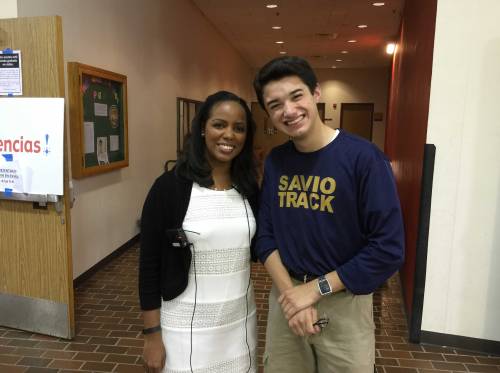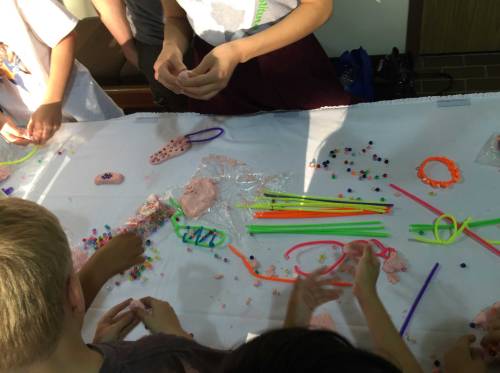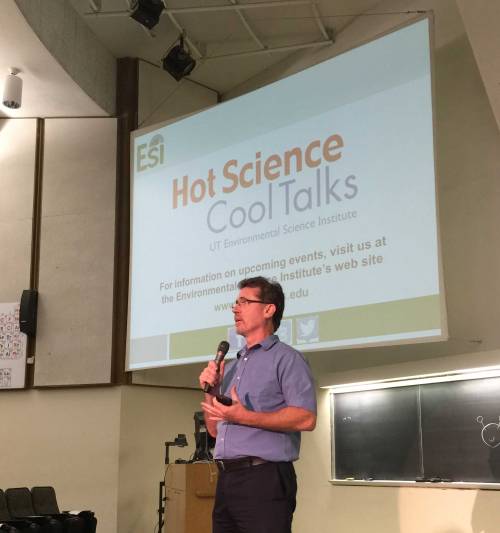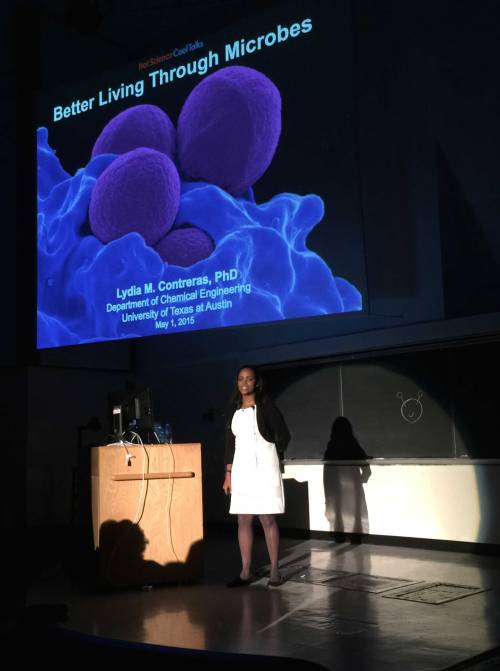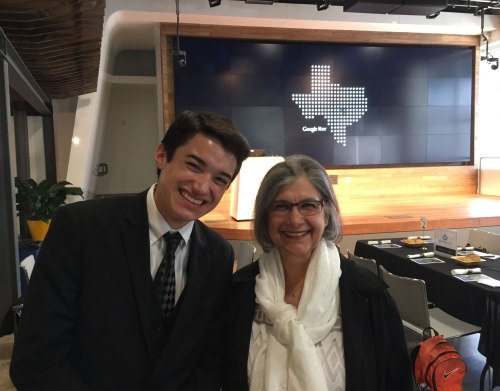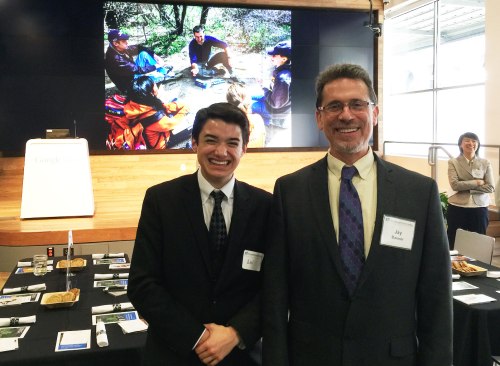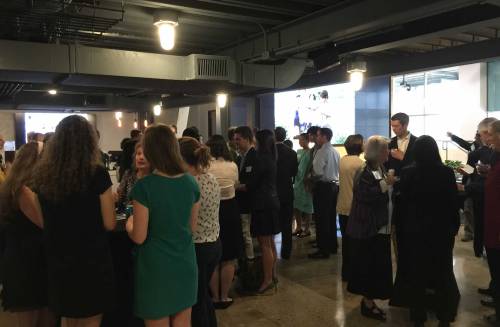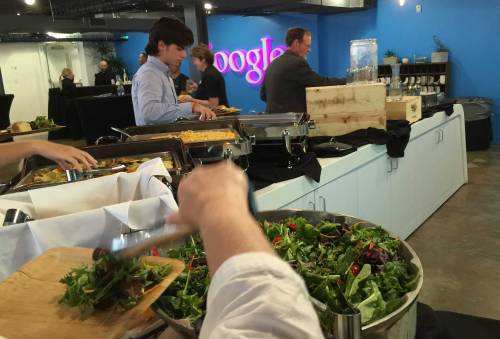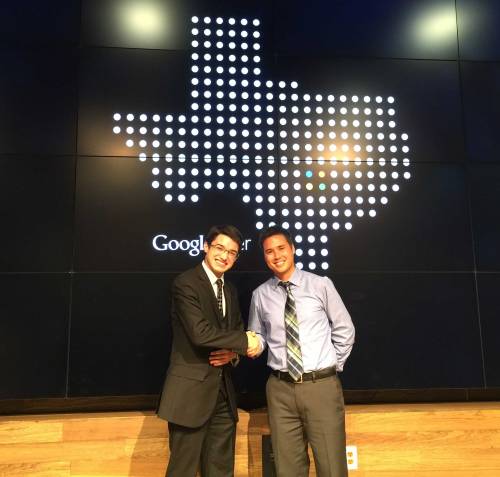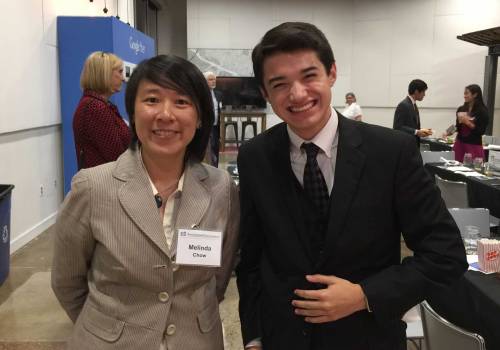I’m so happy that my high school sophomore year is over, and I did great on my finals!
In my English class, our final was mostly over the last two books that we read: All Quiet on the Western Front and Great Expectations. In my world history class, I enjoyed writing a “changes in continuity over time” essay about Europe. I talked about the Roman empire through the Medieval era to the modern day.
UT Environmental Science Institute
In my last blog post, I shared my pictures from the UT Austin Environmental Science Institute Education and Outreach Dinner at the Google Fiber Space on April 29, 2015.
I’m a big fan of the UT Environmental Science Institute (ESI) because they have an awesome program called Hot Science – Cool Talks, where they bring scientists and researchers to talk about hot (of course) science topics each fall and spring semester. The presentations are geared to kids from kindergarten (which I was in at one time) to high school students, but even adults will find the talks and activities before the presentation both fun and interesting.
Better Living Through Microbes

A candid photo of Deinococcus radiodurans (aka Conan the Bacterium) (Photo credit: Michael Daly, Uniformed Services University)
The last Hot Science Cool talks of the Spring 2015 semester on May 1, 2015, was Better Living Through Microbes by Dr. Lydia Contreras, UT Austin Assistant Professor of Chemical Engineering. I previewed her talk in my previous blog post.
Dr. Contreras talked about microbes that could live in toxic environments, and I was fascinated to learn about Deinococcus radiodurans, a bacteria that could survive high doses of radiation.
Scientists discovered this unique bacteria after they irradiated meat for sterilization. The radiation should have killed all the bacteria in the meat, but they discovered that the irradiated meat spoiled after a few days.
Scientists were baffled, and after they investigated, they discovered this new bacteria. In addition to radiation, it can also withstand most cold, dehydration, vacuum, and acid! Because of its hardiness, it also has the nickname, Conan the Bacterium.
How does the bacteria resist radiation?
Dr. Contreras’ is researching the DNA of the bacteria along with its cell composition to understand how it is able to withstand lethal doses of radiation that would kill all other bacteria. These radiation levels are also fatal to humans.
Somehow the bacteria can repair the damage that radiation causes to its DNA. Note however that Deinococcus radiodurans is not immune to radiation. There is a high enough level of radiation that can kill the bacteria.
From her research, we may be able to understand how to protect or repair cells from the harmful effects of radiation. (I learned more about radiation and half-lives in one of the last chapters that we covered in my sophomore high school chemistry class.)
Pictures from the Hot Science – Cool Talks event
One of the benefits of arriving early before the event is that you get to participate in the community science fair. In this activity, kids got a chance to create a DNA model of their own.
I was happy to see Mr. Trevor Hance at the event. He is a wonderful science teacher at Laurel Mountain Elementary.
I’m so grateful to Mr. Hance for inviting me to present my experiences with invasive species at the Children and Nature Network Conference. Dr. Jay Banner, UT ESI director, also highlighted how Mr. Hance inspires his students at the UT ESI Education and Outreach Dinner.
Mr. Eric Hersh is both the UT ESI Research Coordinator and a Geological Sciences lecturer.
This was a treat. Ms. Melinda Chow, UT ESI Outreach Coordinator, gave me a tour of where UT ESI films and streams the Hot Science presentations in a room at the top of the Welch Hall auditorium. Joining the live webcast on your laptop is a great way to be part of the event if you are not able to join in person.
Dr. Banner welcomed the audience and the different schools in attendance.
Dr. Contreras starts her presentation, Better Living Through Microbes.
If you missed the event, you can watch the webcast and learn more about Dr. Contreras’ talk and about the fascinating Deinococcus radiodurans bacteria.
Fall 2015 Hot Science – Cool Talks
The UT ESI team was still confirming the speakers for the Fall 2015 semester during the microbes event, but now they’ve announced their upcoming talks on their website:
- Two Guys on Your Head on Why We Behave Unsustainably with Dr. Art Markman, Dr. Bob Duke, and Rebecca McInroy – August 28, 2015
- The Future of 3D Printing: The Democratization of Design with Dr. Carolyn Seepersad – October 16, 2015
- Humanoids of Our Future with Dr. Luis Sentis – December 4, 2015
Hope to see you there!
Your friend,
Ben

